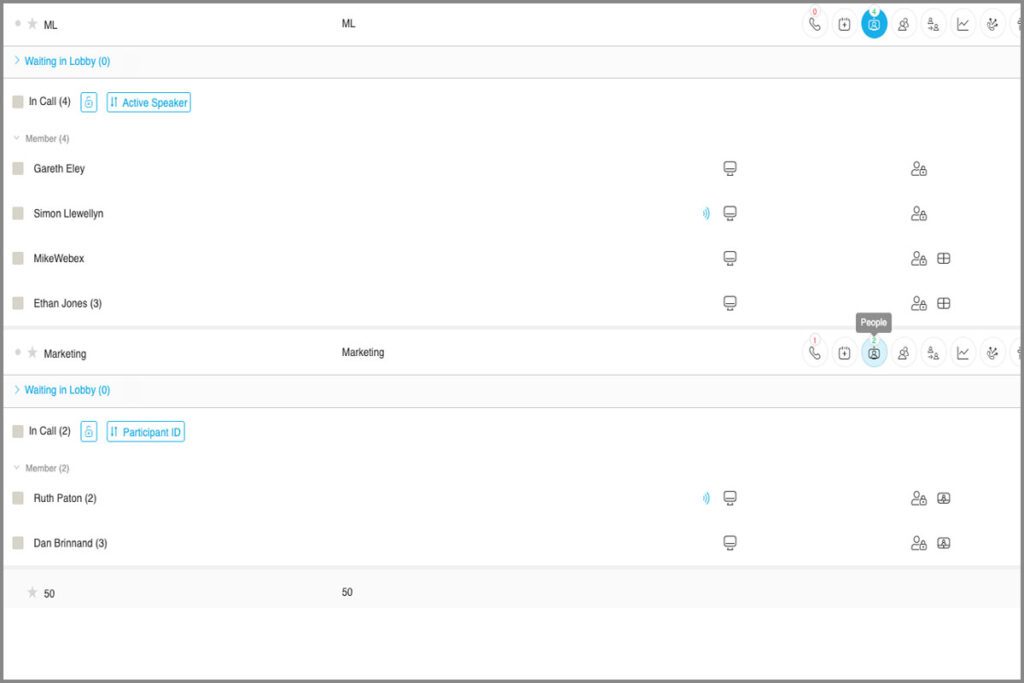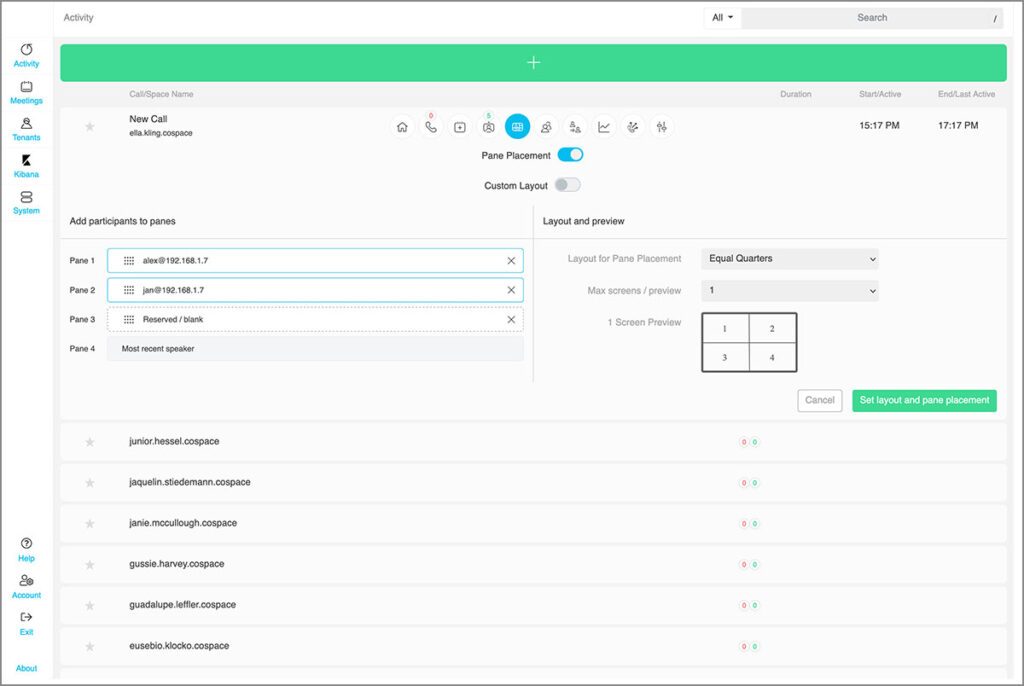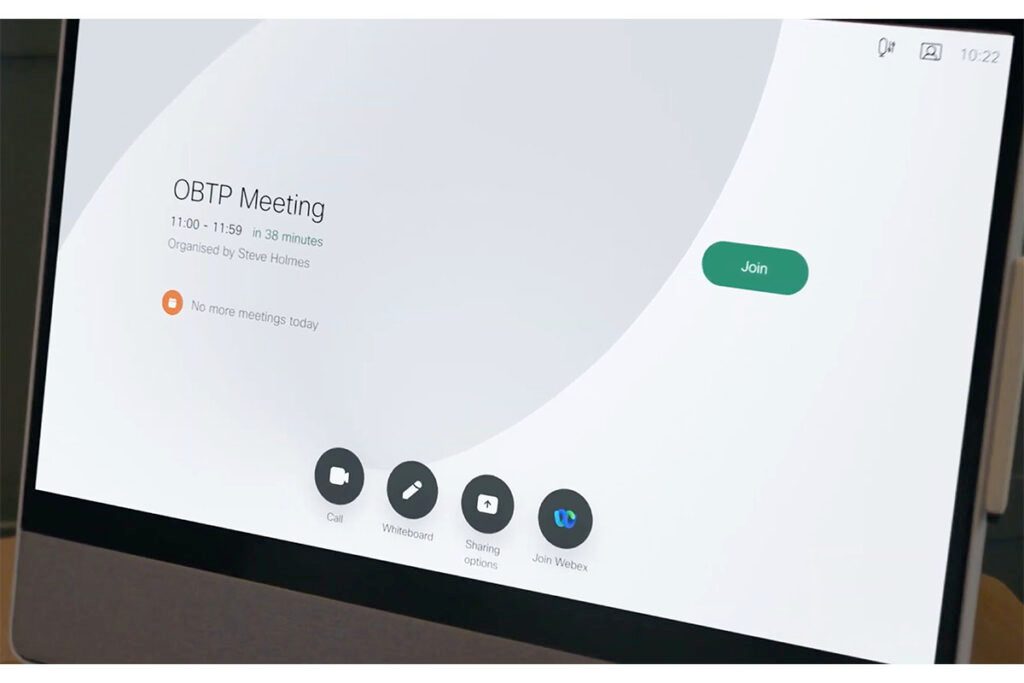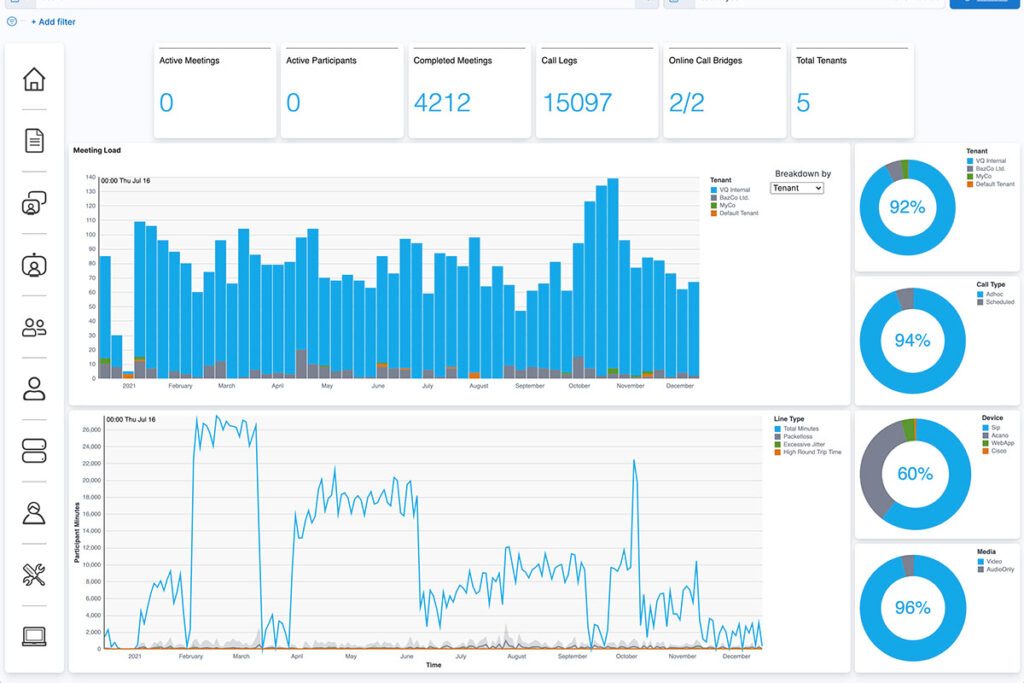VQ Conference Manager 3.9 released mid-January and takes us forward in a number of key areas:
- One-Button-To-Push (“OBTP”). OBTP is something customers love and it’s been on our “to-do” list for a long time. OBTP follows on from Recurring Meetings and the public API; we now offer 3 of the key TMS features that will enable customers to migrate away from TMS.
- Pane Placement/Layout management. Key for concierge services, Pane Placement allows the positioning of participants in specific video panes.
- We’ve completely restructured the reporting dashboards with a very contemporary looking, clean, update. We’re particularly pleased with how visual they are; a lot of information is conveyed quickly and easily. Customer feedback from during the development process was incredibly positive. Not only do they look great, they’re also blistering quick. A lot of backwards and forwards took place between our engineering team and the engineers at Elastic. The results are stunning.
Watch our VQCM 3.9 Release Webinar here
VQ Conference Manager 3.9 is exciting because it adds some great new features. In my mind, however, it’s even more exciting because it’s the next step in a sequence that concludes with a full set of TMS replacement functionality. At VQCM 3.10 (April, 2022 time-frame), we add TMS style Directory Services and at VQCM 3.11, we’ll add device management (device configuration templates).
The excitement is therefore that things are slowly but surely dropping into place and customers will have a secure, scalable, solution that enables them to deliver video conferencing services with end-to-end control. All based on best of breed, modern, software technology and components.
If that wasn’t brilliant enough, a lot of hard work in 2021 means the following are now just below the surface:
- A JITC compliant version of VQCM based on Red Hat Enterprise Linux (RHEL) 8.5. This is due to go into US DOD cyber scan testing in Q1 2022. The first version will be single node but HA will follow on.
- A multi-language capable end-user centric user interface.
- Something called “Call Gate” and “Identity Assured Participants”. We’re about to demo the concept for the first time. If you think it sounds interesting, let us know and we can do private demos. If you’d like to take a guess of what it is, we’ll give* VQ Sweatshirts for the most accurate or interesting answers.
That just leaves this small thing called the Cloud. As 2022 unfolds, we plan to “unleash the beast” and rather than run VQCM under Kubernetes in a VM on VMWare, we’ll take VQ and run it under Kubernetes natively on a cloud service such as AWS. We ran the concept last year and it was surprisingly painless. Our focus then switched to the RHEL version of VQCM. The plan is to repeat the process and take the RHEL version of VQCM, run the playbooks and have it alive and kicking under AWS. ”Look, no-hands” or more importantly, no VMWare. Anybody interested in running a secure version of VQCM on, for example, a secure Cloud? Answers on a postcard please.
Looking forward to a great 2022
Mike
* Limited Supply. Allocated in an entirely arbitrary manner.







